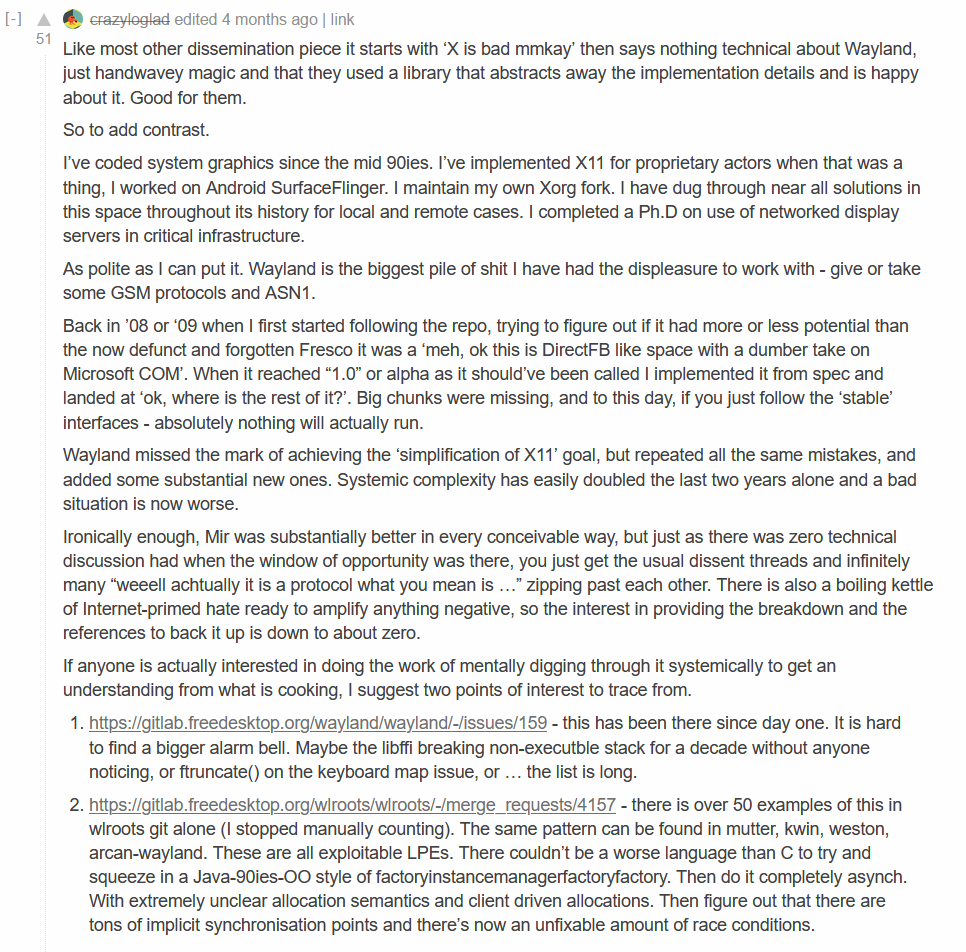this post was submitted on 02 Jan 2024
3 points (100.0% liked)
Linux
57808 readers
1109 users here now
From Wikipedia, the free encyclopedia
Linux is a family of open source Unix-like operating systems based on the Linux kernel, an operating system kernel first released on September 17, 1991 by Linus Torvalds. Linux is typically packaged in a Linux distribution (or distro for short).
Distributions include the Linux kernel and supporting system software and libraries, many of which are provided by the GNU Project. Many Linux distributions use the word "Linux" in their name, but the Free Software Foundation uses the name GNU/Linux to emphasize the importance of GNU software, causing some controversy.
Rules
- Posts must be relevant to operating systems running the Linux kernel. GNU/Linux or otherwise.
- No misinformation
- No NSFW content
- No hate speech, bigotry, etc
Related Communities
Community icon by Alpár-Etele Méder, licensed under CC BY 3.0
founded 6 years ago
MODERATORS
you are viewing a single comment's thread
view the rest of the comments
view the rest of the comments

TL;DR: the author needs to do a better job of citing sources and building an argument.
The author's argument from self-appointed authority tone aside, I dug into the only two verifiable pieces of evidence cited. These are almost impenetrable to the outsider, and even with plenty of coding experience behind me, I'm having to go deep to make sense of any of it. After all, sometimes, bugs and design decisions are the result of a best effort in the situation at hand and not necessarily evidence of negligence, incompetence, or bad architecture. There's also something to be said for organizing labor, focusing effort on what matters, and triaging the backlog.
The original author really needs to pony up a deeper digest of the project, with many more verifiable links to back up the various quality claims. If anyone is going to take this seriously, a proper postmortem is a better way to go. Cite the version reviewed, link to every flaw you can find, suggest ways to improve things, and keep it blameless. Instead, this reads like cherry picking two whole things on the public bug tracker and then making unsubstantiated claims that's a part of a bigger pattern.
My personal take on what was cited:
Links: